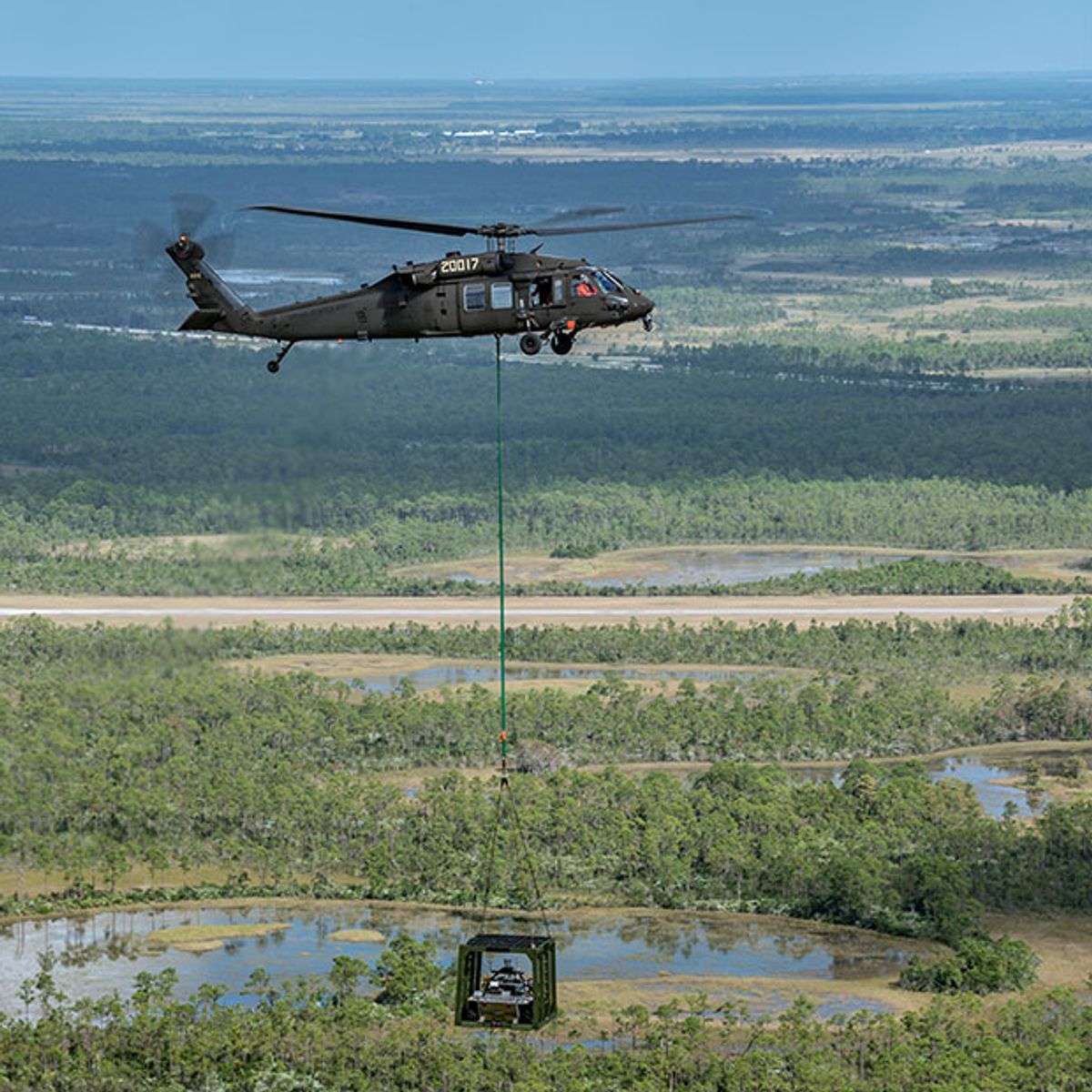In essence, performing reconnaissance is all about trying to find something that you really don’t want to find. Maybe you’re looking for enemy forces, or maybe you’re trying to locate sources of chemical or biological or radiological contamination. In any case, having a team of humans finding what they’re looking for, while technically a success, is not really something to look forward to. “Oh hey, looks like we found that insanely dangerous thing we’ve been searching for, hooray!”
You know what comes next: let’s get the robots to do this sort of thing instead, right? Last October, Carnegie Mellon University, in partnership with aircraft manufacturer Sikorsky, gave the U.S. Army a demonstration of a fully autonomous Black Hawk helicopter teaming up with a fully autonomous ground vehicle to show how a team like this can search out threats without humans having to even get up off the couch.
There’s a safety pilot in the UH-60 Black Hawk, and both it and CMU’s Land Tamer UGV can be controlled directly from the ground, but in this case the mission is fully autonomous. Rather than just relying on one of these vehicles, combining them is what makes a difference; it means that you get the speed and range of the helicopter along with the endurance and precision sensing of the UGV.
We spoke with Jeremy Searock, technical project manager for this project at CMU’s NREC, about how they got this level of multi-robot autonomy to work:
Can you describe the extent of the human involvement in this mission?
The human is providing remote monitoring and can intervene if needed, but the flying and the driving is completely autonomous. The human defines a mission by choosing the general area to fly to, and areas of interest the UGV should investigate, but the execution is autonomous. The UGV (using its onboard sensors, computing, and autonomy software) can detect, classify, and reason about the environment to quickly and safely navigate through unstructured environments.
What are the steps that the robots go through during the deployment of the UGV?
The UAV arrives at the drop-off location, hovers, autonomously descends, and alerts the UGV of touchdown. The UGV control station then confirms touchdown, drives out of the holding “kennel” to a safe distance, and alerts the UAV it is clear to take off. The UAV can ascend and return to base, while the UGV autonomously drives off to its first area of interest to investigate.
Why is having this capability important?
This autonomous capability which combines an UAV and UGV together will allow these missions to be done by robots and not soldiers. The importance is in removing the human from very high risk missions, such as contaminated areas. UAV and UGVs have, of course, been doing this independently, but they have limitations: a UAV can only hover in an area for minutes or hours, and it is difficult to have a particular sensor placed precisely on the ground. In other words, it doesn’t have the ability to gather precise on the ground intelligence for a long period. A UGV can do that, but a UGV has mobility restraints. The terrain may be too rough, or the distance to get to the mission area too far away. When you combine the two together, all of a sudden you magnify the strengths of both robotic systems.
We also asked Searock about some of the challenges that they had to solve to get all of this to work properly, and somewhat surprisingly, it turned out that the difficult bit was getting the UGV to reliably navigate on trails. Dealing with stuff like tall grass, tree limbs across the trail, and inconveniently placed rocks doesn’t get any easier just because a robot helicopter dropped you in the middle of the woods. In this case, CMU’s UGV had to learn how to tell which kinds of vegetation it can safely smash through, and the human mission commander can change that level of aggressiveness if necessary.
At this point, the project has been able to demonstrate that the technical capabilities exist for an autonomous, cooperative multi-robot mission like this to succeed, but that doesn’t necessarily mean that we’ll immediately see robot helicopters dropping UGVs out of the sky all over the place. The conditions in place for this proof-of-concept demo were pretty close to ideal, and more testing is definitely necessary to bring this system anywhere close to the maturity level required for real military deployment.
[ NREC ]
Special thanks to Jeremy Searock for speaking with us.
Evan Ackerman is a senior editor at IEEE Spectrum. Since 2007, he has written over 6,000 articles on robotics and technology. He has a degree in Martian geology and is excellent at playing bagpipes.



